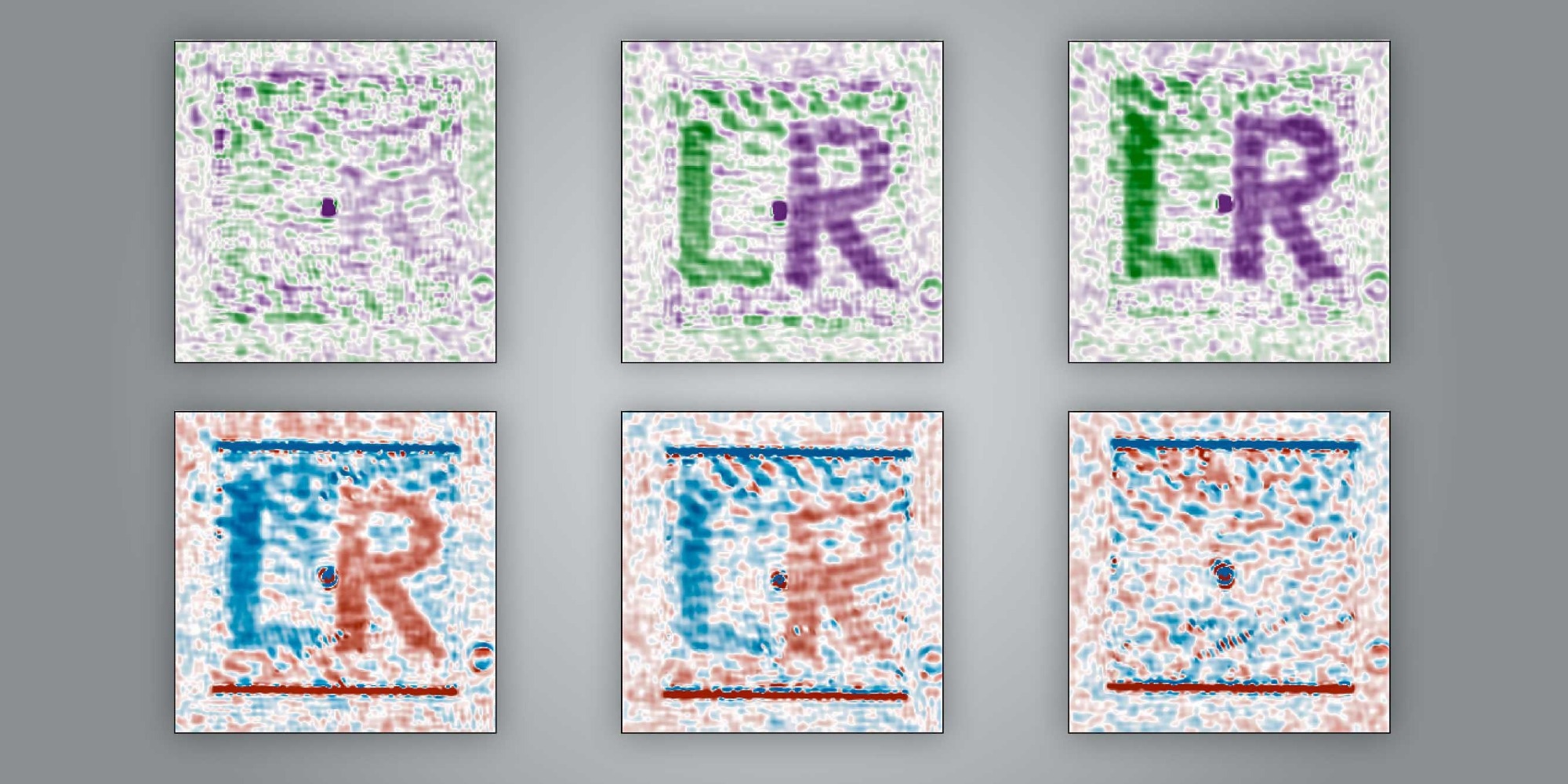How do left and right-handed molecules differ? Researchers at ETH Zurich are utilizing a novel imaging technology to see what was previously only measured as an average, which opens up new avenues for biology and materials research. The study was published in the journal Nature Photonics.
 A new method reveals whether nanostructures are left- or right-handed and visualizes the result in a single image. The image shows various left- and right-handed structures. Image Credit: Rebecca Büchner / ETH Zurich
A new method reveals whether nanostructures are left- or right-handed and visualizes the result in a single image. The image shows various left- and right-handed structures. Image Credit: Rebecca Büchner / ETH Zurich
Why do spearmint and caraway seeds smell so different, even though their basic scent molecules are nearly identical? Why may one drug save lives while the opposite is useless or even harmful? The explanation rests in chirality, or the “handedness” of molecules. Many molecules have left and right variants, similar to how the left and right hands are identical but cannot be stacked on top of each other. These frequently have very different outcomes.
A research team at ETH Zurich, led by Romain Quidant, Professor of Nanophotonics, has devised a method for spatially visualizing chirality using a single image. Until now, chirality could only be assessed throughout a complete sample, yielding an average value.
With this new method, we can use a single image to identify the areas of our sample where left-handed and right-handed structures occur.
Rebecca Büchner, Study Lead Author and Doctoral Student, ETH Zurich
Light as the Key to Handedness
Büchner employed specifically made gold nanostructures, or specially created chiral samples, for the investigation. These were created by Quidant’s group lab manager, Jose García-Guirado. Büchner was consequently aware of the proportion of left-handed and right-handed elements to be present in the image.
She employed a recently developed imaging technique that functions similarly to a highly specialized camera to reveal the chirality of the samples. Its unique feature is its capacity to identify the sample’s interactions with various forms of circularly polarized light.
When light waves go to the left or right, they rotate in a spiral pattern, which is known as circularly polarized light. In nature, many chiral molecules respond differently to certain kinds of light. For instance, they may rotate their direction of oscillation slightly or absorb more left-handed light than right-handed light.
Büchner's system records both spiral directions simultaneously, in contrast to conventional techniques that need two independent measurements with left- and right-circular polarization. It makes use of a smart optical setup in which reference beams that produce interference patterns split the light into left- and right-circular components after it has passed through the sample. These patterns make chirality evident by illuminating the interactions between the various forms of light and the sample.
This superimposition would only produce an unreadable image on a standard camera. However, the new technique makes it possible for a computer to correctly read the data. Which sections of the sample are left-handed and which are right-handed are shown by the color-coded maps that are produced.
“We were even able to visualise letters such as ‘L’ and ‘R’, which were made up of nanostructures with different handedness,” reported Büchner.
Opportunities for Biology and Materials Science
I see the greatest potential for our method wherever chirality varies spatially, which has been virtually impossible to measure until now.
Jaime Ortega Arroyo, Study Co-Supervisor and Senior Scientist, ETH Zurich
This is a well-known issue, particularly in materials science: chiral materials are difficult to resolve spatially, like when distinct zones of a material have various handednesses. The new technique now allows us to immediately visualize these disparities.
There is also promise for pharmaceutical applications: numerous drugs are composed of chiral molecules, with just one variant being effective. A method for determining handedness might aid in better analyzing complicated mixtures or developing novel diagnostic methods.
“This applies not only to molecules but also to larger structures such as parts of cells, whose chirality has hardly been studied to date,” explained Büchner.
There is also potential in the field of pharmacy. Many drugs are made of chiral molecules, but only one version is effective. A method that can reveal handedness could help to better analyze complex mixtures and develop new diagnostic tools.
Final Touches in the Laboratory
The novel imaging technology is still in the research phase, and the signals observed thus far are modest and noise-sensitive.
“Our biggest challenge was to reduce the noise and signals coming from artefacts in the image to such an extent that we could be sure that the signals actually originated from chirality,” added Ortega Arroyo.
The researchers' next goal is to increase the system's sensitivity. More work must be done before it can be applied in the real world. Currently, the emphasis is on finding suitable applications and modifying the approach accordingly.
Büchner concluded, “We know what our platform can do, but other researchers know much better what other use cases could best be investigated with it.”
Journal Reference:
Büchner, R., et al. (2025) Wide-field spectroscopic imaging of optical activity. Nature Photonics. doi.org/10.1038/s41566-025-01722-0.